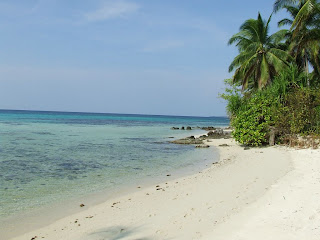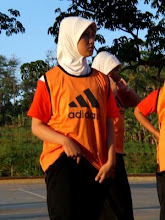
Sejarah Persijap
Sebelum berkiprah dalam kancah persepakbolaan nasional seperti sekarang ini, persijap telah mengarungi perjalanan dalam rentang waktu yang cukup panjang. Dengan kata lain sepakbola di Jepara mempunyai catatan sejarah yang cukup panjang.
Pada paruh waktu sekitar tahun 1930-an, di Jepara lahir dua klub sepakbola bentukan Belanda. Yaitu Y.V.C. (Yapara Voedbal Club) dan Alsides. Dengan demikian cikal bakal sepak bola di Jepara sudah berakar sejak penjajahan Belanda. Sepak bola di Jepara pada kurun waktu itu dalam waktu singkat sudah bisa menjadi olah raga rakyat. Di setiap pelosok desa sepak bola sudah dimainkan. Namun setelah Belanda kalah dan bangsa Indonesia di jajah Jepang, dua klub tersebut akhirnya bubar.
Tetapi terbukti kemudian, sebagai olah raga rakyat, sepak bola terus berkembang. Melihat perkembangan sepakbola di Jepara, Bupati Jepara waktu itu, Syahlan Ridwan (1954) berkeinginan membentuk sebuah kesebelasan milik Kabupaten Jepara. Ide ini dilandasi dengan semakin banyaknya klub-klub yang tumbuh. Tahun itu kemudian dicatat sebagai tahun berdirinya Persijap Jepara, tepatnya pada tanggal 11 April 1954.

Seiring dengan perjalanan serta kiprah persijap di jagat persepakbolaan nasional, juga memunculkan beberapa nama yang menjadi populer, bahkan melegenda. Diantaranya adalah Kamal Junaidi, yang meninggal karena tersambar petir, dalam laga final Piala Makutarama yang digelar di Salatiga pada tanggal 28 Agustus 1973 melawan kesebalasan dari Persipa Pati. Nama Kamal Junaidi kemudian diabadikan sebagai nama stadion sepak bola, yang menjadi kebanggan warga masyarakat Jepara.
Beberapa pemain sepakbola dari Jepara juga pernah memperkuat timnas. Diantaranya adalah Haryanto yang menjadi kiper andalan timnas pada tahun 1979. Setelahnya juga ada nama Siswadi Gancis yang menjadi kiper PSSI Garuda pada tahun 80-an. Generasi setelahnya pada tahun 2000-an juga ada nama Solekan, dan Warsidi.
Sehingga tidak berlebihan kalau Jepara, yang nota bene merupakan kota kecil, menjadi barometer sepak bola di Jawa Tengah. Bahkan dalam perkembangannya sekarang, bisa melampaui PSIS Semarang dan Persis Solo, yang mempunyai nama lebih besar dan dana yang juga lebih besar. Hal ini terkait dengan keberhasilan Persijap berhasil lolos ke Liga Super PSSI 2008. Sedangkan kedua tim lainnya dari Jawa Tengah tersebut tetap bertahan di Divisi Utama.
Home base Persijap terletak di Jl. Mangunsarkoro Jepara, sedangkan home ground-nya akan menempati stadion yang baru, yaitu Stadion Gelora Bumi Kartini (GBK). Stadion GBK menjadi stadion yang baru bagi Persijap, karena stadion Kamal Junaidi tidak lagi memenuhi syarat untuk dipakai bertanding dalam ajang Superliga tahun 2008.
Kapasitas stadion (GBK) mempunyai daya tampung sekitar 20.000 penonton, dengan kapasitas tribun tertutup sebanyak 7000 orang dan tribun terbuka 13.000 orang penonton. Hampir setiap kali pertandingan home (kandang), stadion di Jepara dipenuhi oleh penonton/supporter setia Persijap.Sementara ini supporter Persijap yang berjumlah sekitar 10.000 orang terbagi dalam 2 (dua) kelompok, yaitu Jetman (Jepara Tifosi Mania) dan Banaspati.

Stadion GBK terletak di Kelurahan Ujungbatu, Kecamatan Jepara, sekitar 1 km dari Kantor Bupati Jepara. Stadion GBK dibangun sejak tahun 2001. Luas kawasan atau kompleks stadion ini 159.800 m2 dengan luas stadion 30.000 m2., dan luas lapangan 7.500m2. Stadion ini nantinya dilengkapi dengan track untuk lintasan atletik dengan panjang 500m2 dengan lebar 6 m. Fasiltas lain yang melengkapi stadion GBK adalah tribun terbuka dan tribun VIP yang bertatap space frame.
Jenis rumput yang digunakan di lapangan utama stadion GBK adalah bermuda (dactylon cycnodon). Fasilitas stadion nantinya akan semakin representatif dengan dilengkapinya sarana dan fasilitas stadion berupa ruang ganti pemain, ruang ganti wasit serta ruang untuk peliputan dan konferensi pers. Fasiltas berupa kamar mandi – shower dan toilet diharapkan bisa membuat pengguna stadion ini bertambah nyaman.













